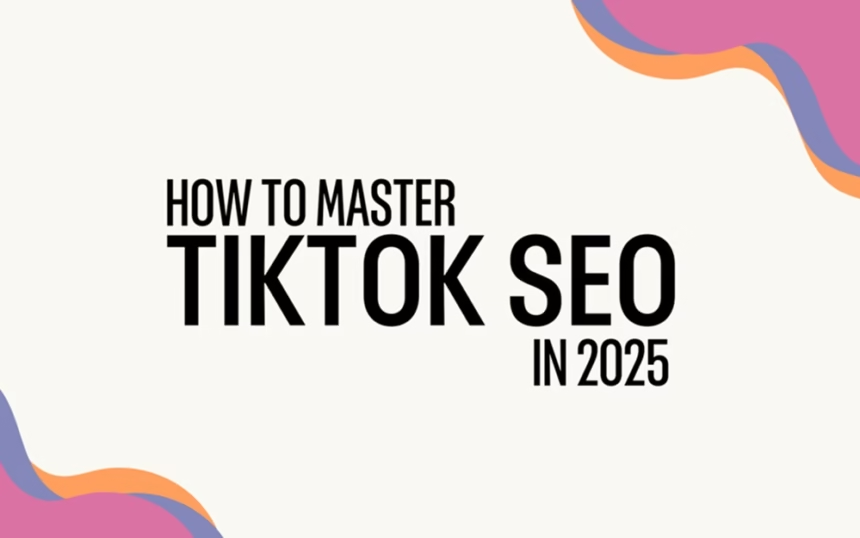TikTok is now a search engine in its own right. Viewers type questions, compare options, and buy based on what they find. That shift makes TikTok SEO a direct path to steady views, followers, and sales.
This guide shows how TikTok reads intent, where to place keywords, and how to build topic authority. It speaks to creators, brands, and local businesses that want predictable discovery without chasing every trend.
TikTok SEO in 2025: How the Search Algorithm Ranks Videos
TikTok aims to match a clear question with a clear answer. When someone types a query, TikTok compares their words with video signals, then ranks content that looks relevant and engaging.
What TikTok looks at:
- Search intent: the exact words a user types and what they want to learn or do.
- Ranking signals: watch time, retention, comments, saves, and shares.
- Topical authority: a creator’s track record on a subject.
- Keyword coverage: captions, on-screen text, voice, hashtags, and even auto-captions.
Example: a viewer searches “best beginner dumbbell workout.” A video that says this phrase on-screen in the first frame, mentions it in the voice-over, and keeps people watching for most of its length is more likely to rank.
Search intent on TikTok: match the exact question
People write full questions on TikTok, just like they do on Google. This is a gift for creators.
- Use the same wording viewers search. “How to clean white sneakers” beats “sneaker cleaning tips.”
- Keep one main idea per video. Split big topics into a series.
- Say the exact phrase, not a vague version.
A how-to that opens with “How to clean white sneakers fast” will align with that search and win more often than a general shoe care clip.
Top ranking signals: watch time, retention, comments, shares
TikTok wants proof that a video holds attention and sparks action.
- Completion rate: the percent of viewers who finish the video.
- Average watch time: the average number of seconds watched.
Boost these signals with fast hooks, clear structure, and tight pacing. Ask for comments with one simple question. Encourage saves with a reason, like a checklist. Shares often follow utility and emotion, so make videos people want to send to a friend.
Build topical authority with a clear niche
Posting often on one topic trains TikTok to trust a creator on that subject.
- Pick a narrow niche. Example: budget skincare for teens.
- Use series formats to stack authority. “Day 1 to Day 30,” “Quick Tips,” or “One Product, Three Uses.”
- Link videos in captions and comments to keep viewers inside the topic.
Over time, this library effect lifts new posts faster and helps them rank for broader searches.
Where to place keywords: captions, text, voice, and hashtags
TikTok reads multiple surfaces. Cover them early and clearly.
- Caption: put the main keyword first.
- On-screen text: show a readable title in the first 1 to 2 seconds.
- Voice-over: say the main phrase in the first sentence.
- Hashtags: use relevant tags tied to the topic.
Keep it natural. Write for viewers first, then signal the algorithm with clean phrasing.
Find TikTok Keywords Users Actually Search For
Great TikTok SEO starts inside the app. The search bar shows real phrasing and intent. Build a plan from what people already type, not guesses.
Use TikTok search suggestions and auto-complete
Type a seed topic and watch what fills in. Those suggestions reflect demand.
- Save phrases that repeat.
- Open top videos for each phrase and note patterns. How do they title the video? How long are they? What visuals appear in the first second?
These clues help shape scripts and hooks that fit what viewers expect to see.
Target long-tail phrases and question keywords
Long-tail phrases are longer and more specific, with stronger intent.
- Examples: “easy sheet pan dinners for two,” “how to start a budget binder,” “best sunscreen for teenage acne.”
- They’re easier to rank for and bring viewers ready to watch or buy.
- Stack several long-tail videos to earn authority, then go after broader terms.
Map one main keyword per video, plus synonyms
Give each video one primary phrase. Add 2 to 3 synonyms that mean the same thing.
- Weave the main phrase into the first line of the caption and on-screen title.
- Use synonyms in the description or voice-over to keep language natural.
- Avoid stuffing. Aim for clarity and flow.
Plan a simple content calendar from keyword clusters
Group related searches into a four-week plan. Keep it simple.
- Week structure:
- One core how-to
- One quick tip
- One product or tool explainer
- One myth or mistake video
- Track which phrases bring views from search. Double down on winners.
Optimize Every Video: Captions, On-Screen Text, Voice-Over, and Hashtags
Think of each surface as a chance to confirm the topic. Small tweaks compound.
Write keyword-rich captions that sound natural
Use a clean caption formula:
- Main keyword at the start
- A short benefit or result
- A call to action for comments
Two quick examples:
- “How to clean white sneakers, with baking soda and soap. Comment your toughest stain.”
- “Beginner dumbbell workout at home, 10 minutes. Ask for the printable plan.”
Avoid repeating the same phrase over and over. It looks spammy and hurts readability.
Hook viewers in 3 seconds with on-screen titles
The first frame should show a title that matches the search phrase.
- Use large, high-contrast text.
- Keep it short so UI buttons do not cover words.
- Center or top-align to stay visible.
Example on-screen title: “How to Clean White Sneakers Fast.”
Say the main keyword early in the voice-over
Scripts should start strong. Say the primary phrase right away.
- First sentence example: “Here’s how to clean white sneakers in five minutes.”
- Keep a steady pace and clear tone.
- Turn on auto-captions, then fix errors so the text supports the keyword.
Hashtag strategy in 2025: relevant over popular
Use a small set that matches the actual video.
- Choose 3 to 5 specific hashtags tied to the topic.
- Add one or two broader tags for discovery.
- Skip random trending tags that don’t fit.
Example set: #whitesneakers #cleaningtips #shoecare #stainremoval #sneakercare
Pro Tips to Rank Higher: Authority, Engagement, and Analytics
These habits compound results. Keep them simple and repeatable.
Make the profile SEO-friendly: handle, name, and bio
- Include the niche keyword in the display name or bio if it fits.
- Add a short tagline that states value, like “Simple acne routines for teens.”
- Keep links, highlights, and pinned videos on-topic.
A clean profile helps TikTok and users understand who the content helps.
Boost engagement with comments, Q&A, and CTAs
- Ask one question per video to spark comments. Keep it direct.
- Reply to a top comment with a new video. That reply can rank for the question.
- Use clear CTAs: “Comment the problem,” “Vote in comments,” “Save for later.”
These signals help videos climb in search and For You feeds.
Measure results in TikTok Analytics and Creative Center
Watch the metrics that reflect search success.
- Key metrics: views from search, average watch time, retention, comments, saves.
- Check TikTok Creative Center for rising queries and sounds in the niche.
- Iterate titles and hooks based on what holds attention.
Adjust weekly and retire tactics that stall.
Common SEO mistakes on TikTok to avoid
- Weak hooks: fix by showing the result in the first second.
- Vague captions: lead with the main keyword and a clear outcome.
- Only trend-chasing: mix trends with evergreen how-tos.
- Keyword stuffing: write for humans and mention the phrase cleanly.
- Changing topics too often: stick to one niche and build a series.
A simple checklist before posting will catch most of these.
Conclusion
TikTok behaves like a search engine, so clear keywords, strong hooks, and focused topic authority win. Keep the plan simple and steady.
A 30-day action plan:
- Week 1: research long-tail keywords and group them into clusters.
- Weeks 2 to 4: post a small series in one niche, one how-to, one quick tip, one tool explainer, one myth video per week.
- Every upload: put the keyword in the first line of the caption, the first frame of on-screen text, and the first sentence of the voice-over.
- Each week: review analytics, note which phrases drive search views, and refine hooks.
Hit publish, learn fast, and repeat. The creators and brands that stay consistent earn trust, rank higher, and turn searches into loyal followers.















